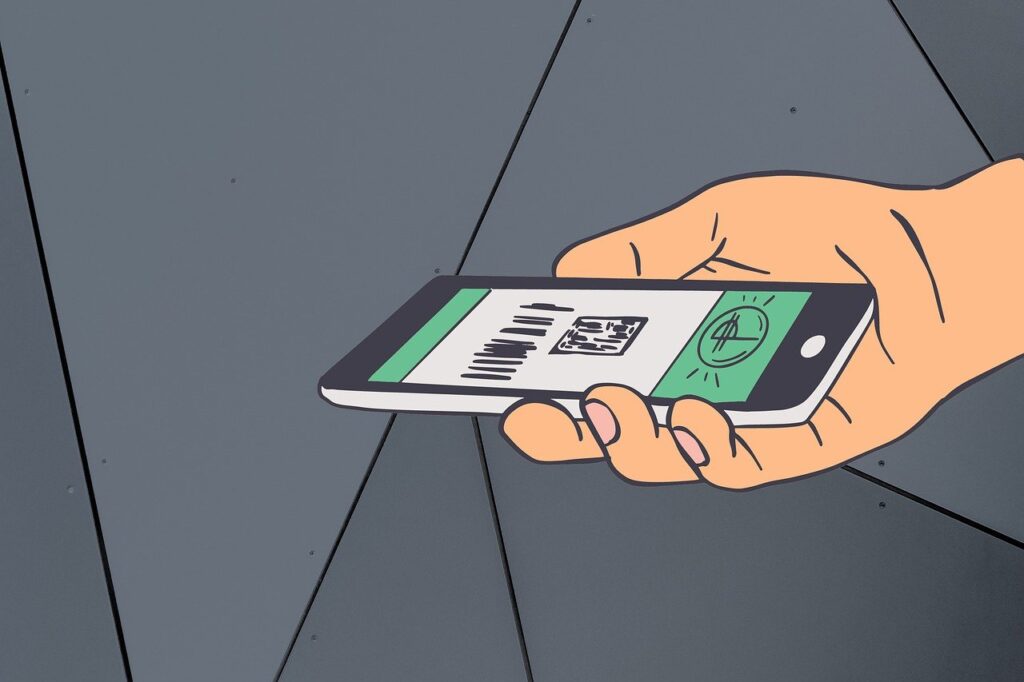QR codes have become a convenient way to access information, make payments, and interact with digital content. However, cybercriminals have also exploited this technology to launch phishing attacks and scams. Knowing the red flags can help you stay safe when scanning QR codes to avoid QR Code Scams.
Understanding QR Code Scams
QR codes, or Quick Response codes, are machine-readable barcodes that can store a variety of information, from website links to payment details. While they offer numerous benefits, cybercriminals have devised deceptive ways to use QR codes for fraudulent activities. These scams, commonly known as “quishing” (QR phishing), are on the rise.
How QR Code Scams Work
Hackers use QR codes as a means to lure unsuspecting individuals into malicious traps. Some of the most common tactics include:
- Embedding Malicious Links: Scammers insert QR codes into advertisements, emails, and posters that, when scanned, direct users to phishing websites designed to steal login credentials or financial details.
- Disguising Malware Downloads: A scanned QR code may trigger an automatic download of malware, spyware, or ransomware that compromises personal or business data.
- Hijacking Payments: Criminals modify payment QR codes, redirecting transactions to fraudulent accounts instead of legitimate businesses or service providers.
- Mimicking Legitimate Brands: Fraudsters send emails or messages with QR codes pretending to be from trusted organizations like banks, government agencies, or online services, urging users to scan and verify their details.
- Creating Fake Promotions and Giveaways: Scammers may distribute QR codes that promise discounts, gift cards, or prizes but actually steal personal information when scanned.
- Tampering with Public QR Codes: Fraudsters may print fake QR codes and place them over legitimate ones in restaurants, parking meters, or event venues
Common QR Code Scams
1. Phishing Attacks (Quishing)
Fraudsters create malicious QR codes that direct users to fake websites resembling legitimate ones. These sites trick users into entering login credentials, payment details, or personal information.
2. Malware-Infested QR Codes
Some QR codes, when scanned, trigger downloads of malware that can steal data, track activity, or even lock your device (ransomware).
3. Fake Payment QR Codes
Scammers replace real payment QR codes (e.g., restaurant bills, donation boxes, or parking meters) with their own, redirecting payments to their accounts.
4. Social Engineering QR Scams
Fraudsters send QR codes via email or messages, posing as banks, government agencies, or well-known brands, urging users to scan and verify accounts or claim prizes.
5. Fake Wi-Fi Access QR Codes
Public places may have QR codes that promise free Wi-Fi access but actually collect personal data or install tracking software on users’ devices.
6. Business Card QR Code Scams
Some scammers create fake business cards with QR codes that, when scanned, infect devices with malware or lead to phishing sites.
QR Code Scam Statistics
- According to cybersecurity reports, QR code phishing attacks increased by 500% in the past two years.
- A study revealed that 60% of people do not verify QR codes before scanning them.
- QR code payment fraud resulted in millions of dollars in losses in 2023 alone.
- More than 70% of businesses now use QR codes, increasing the risk of exploitation by scammers.
These alarming statistics highlight the urgent need for QR code security awareness.
Red Flags to Watch Out For
- 🚨 Unverified or Random QR Codes
Be cautious when scanning QR codes from unknown sources, such as unsolicited emails, flyers, or posters in public places. - 🔗 Suspicious or Shortened URLs
After scanning a QR code, check the URL before clicking. If it looks odd, contains misspellings, or uses a shortened link (e.g., bit.ly, tinyurl), verify its legitimacy before proceeding. - 📋 No Context or Explanation
Legitimate QR codes usually include some context or branding. If a QR code is displayed without any explanation, it could be a scam. - 💳 Unexpected Payment Requests
Be wary of QR codes asking for payment or financial information, especially in public areas where scammers can replace original codes with fraudulent ones. - 📧 QR Codes in Unsolicited Emails or Messages
If you receive an unexpected email or text message with a QR code claiming to be from your bank, employer, or government agency, verify it through official channels before scanning. - 🏪 Tampered or Overlaid QR Codes
Scammers sometimes place their own QR stickers over genuine ones at restaurants, parking meters, or ATMs. If something looks off, don’t scan it. - 🔄 Repeated Redirects After Scanning
If a QR code redirects you multiple times or asks for unnecessary permissions (e.g., location, camera, or contacts), exit immediately.
How to Stay Safe When Using QR Codes
- Use a QR Code Scanner with Security Features – Some apps detect malicious links before opening them.
- Check the URL Before Clicking – If possible, manually enter the URL instead of scanning a QR code.
- Verify the Source – Scan only from trusted sources like official websites, business cards, or well-known companies.
- Enable Two-Factor Authentication (2FA) – This adds an extra layer of security in case your credentials are compromised.
- Avoid Scanning QR Codes for Payments in Unfamiliar Places – Use official apps or websites instead.
- Regularly Update Your Device & Security Software – This helps protect against malware threats.
- Report Suspicious QR Codes – If you encounter a fraudulent QR code, report it to the relevant authorities or businesses.
